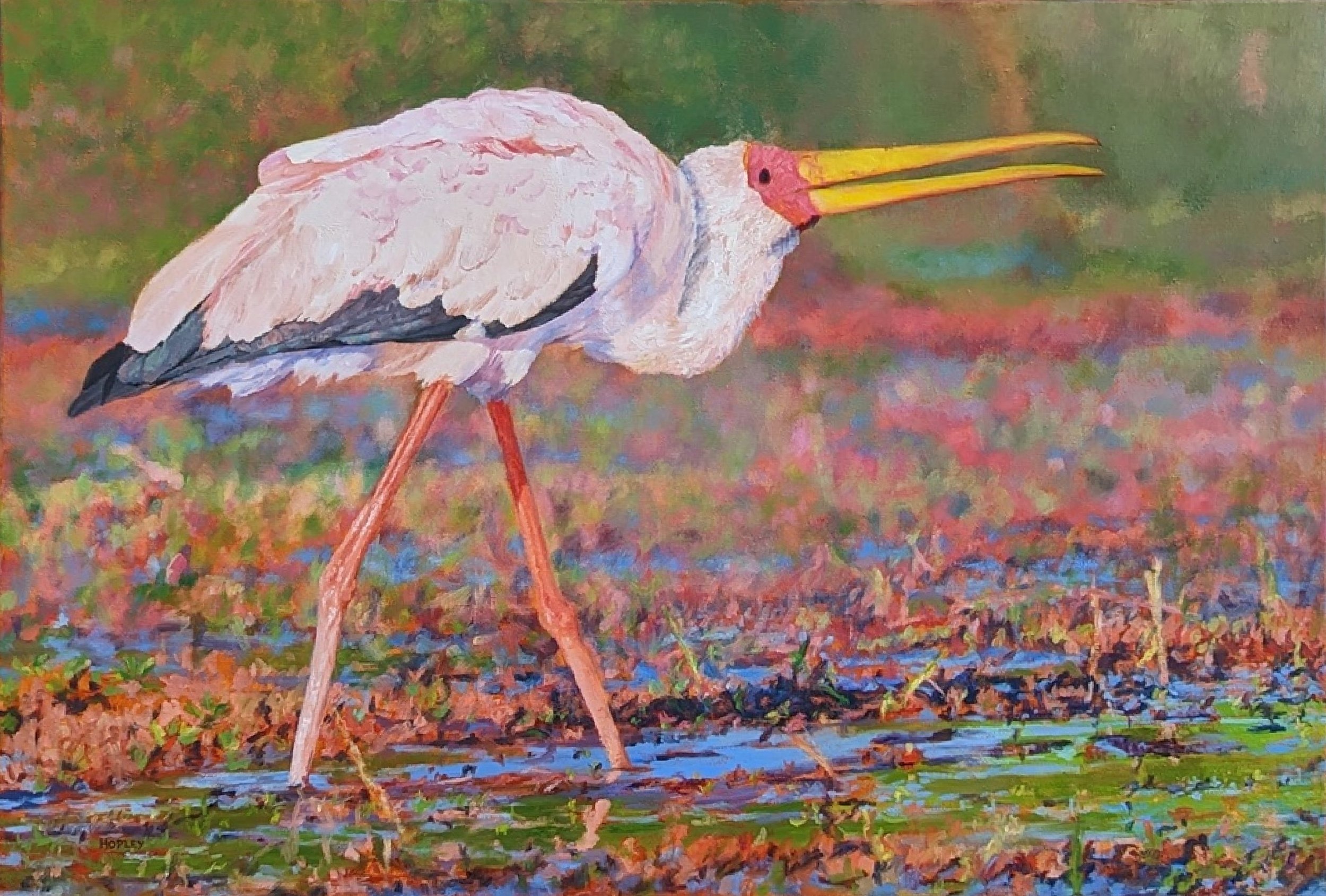"Stork, Botswana" originates from a memorable photo safari on Botswana's Chobe River, a place teeming with wildlife. An early morning along the riverbanks presented an ever-unfolding spectacle of life. This particular moment, captured by my brother-in-law, was of the rich, vibrant colours of a Yellow-billed Stork against a backdrop of equally vibrant grasses and lichens, making it an irresistible subject for a painting.
I aimed to capture the stork as we observed it, actively poking around in the shallow water and dense reeds. Even as it searched for food, its posture was quite focused. An interesting fact about these remarkable storks is their foraging method; they often rely on touch to find food, deftly jabbing their long beaks into the water, rather than primarily using sight!
Artistically, for the bird itself, I opted for fairly large brushes, initially hoping to capture its striking form in a single, bold pass to maintain spontaneity. Though it ultimately required two layers to achieve the desired depth and effect, this direct approach helped convey its dynamic presence. Once the initial forms were established, I returned to the stork's beak and its dark feathers. For those dark feathers, I carefully mixed my greens, building rich, nuanced textures by starting with Cerulean, Ochre, and Raw Umber for the warmer tones, and Cobalt for the cooler greens. Painting the white of the feathers was a lot like painting snow—neither are pure white; instead, they reveal subtle pinks, mauves, and soft orange hues!
To build the rich tapestry of the environment around the stork, I used a methodical approach, working in sections across the canvas. My technique involved layering colours, often starting brighter than I initially thought, to allow the vibrancy of the African landscape to truly emerge. I consciously kept specks of multiple colours showing within areas to prevent muddiness and to give a lively texture to the grasses. I focused on capturing little snippets at a time, striving for a larger, distant feel rather than excessive detail in the background; especially where elements became blurrier, using less paint to achieve that atmospheric quality. For the reds in the scene, I carefully layered cooler pinks and reds near blues, followed by warmer reds—a technique that helped prevent unintended muddy tones.
I hope you feel the joy and wonder we felt viewing the extraordinary wildlife we saw that day.
